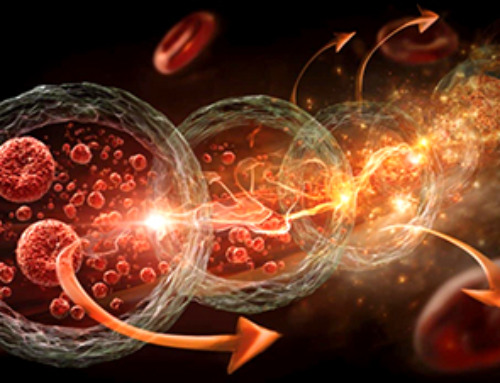Hacking humans with nanotechnology may sound like a concept from a futuristic science fiction novel or movie, but the truth is, it’s not that far off and it could be the next big cyberthreat. If you thought data breaches involving your social security number or credit card information were scary, imagine the ramifications nanotechnology hacking.
What is Nanotechnology & Hacking Humans with Nanotechnology?
Technically speaking, nanotechnology is any technological endeavor that deals with anything with a dimension of less than 100 nanometers. That is very small. For comparison, there are 25,400,000 nanometers in just one inch. Much of this scientific and technological field focuses on working with atoms. While the concept was first brought to light in the late 1950s, it wasn’t until the late 1980s that technology advanced enough to actually allow scientists to work in such a small field.
Nanotechnology has several applications. Food, technology, fuels, batteries, environmental causes, chemical sensors and even sporting goods have already benefited from nanotechnology, and will benefit even more in the future. However, the medical field is one of the most exciting for nanotechnology at the moment, though most developments are still in the experimental phase. With these developments comes the ever-present technological risk of hacking.
How is Nanotechnology Used in Humans?
In the future, nanotechnology will be used for incredible purposes. One possibility still being researched is building new muscle with carbon nanotubes. Scientists at IBM are also working on using nanotechnology to analyze DNA in just minutes (instead of weeks) to treat cancer patients with a customized treatment plan. Other medical technology experts are exploring using nanotechnology to send treatments like chemotherapy or vaccines to target specific types of cells in the body. Experimental nanosponges are being tested to absorb toxins in the body, and there are several different nanotechnology projects in experimental phases that seek to hyper target treatment to cancer cells. It is also being explored as an early diagnostic tool to detect cancers and infectious diseases long before our current technology is able. Some nanotechnology ideas include a tiny device that gets injected into the body as a sensor or medical delivery device. This all sounds positive, but there is a downside too.
Is Medical Technology Secure?
Now that we are entering a new era of medical nanotechnology, scientists need to make sure treatments are not only effective, but secure. Many experimental treatments are, after all, electronic medical devices, just on a smaller scale. These tiny devices are typically controlled by a program on a traditional electronic device like a computer, smartphone or server, meaning they could be very hackable. Some digital security experts posit that a single nanoparticle in the body with it’s own processor could be hacked, but they also say that if someone had more than one particle in the body, which many treatments would require, a hacker could theoretically turn them into a network in the body, using the body’s own systems to communicate and do their bidding.
Image Credit: © Alias Studio Sydney/ Envato
News This Week
AI matches doctors in mapping lung tumors for radiation therapy
In radiation therapy, precision can save lives. Oncologists must carefully map the size and location of a tumor before delivering high-dose radiation to destroy cancer cells while sparing healthy tissue. But this process, called [...]
Scientists Finally “See” Key Protein That Controls Inflammation
Researchers used advanced microscopy to uncover important protein structures. For the first time, two important protein structures in the human body are being visualized, thanks in part to cutting-edge technology at the University of [...]
AI tool detects 9 types of dementia from a single brain scan
Mayo Clinic researchers have developed a new artificial intelligence (AI) tool that helps clinicians identify brain activity patterns linked to nine types of dementia, including Alzheimer's disease, using a single, widely available scan—a transformative [...]
Is plastic packaging putting more than just food on your plate?
New research reveals that common food packaging and utensils can shed microscopic plastics into our food, prompting urgent calls for stricter testing and updated regulations to protect public health. Beyond microplastics: The analysis intentionally [...]
Aging Spreads Through the Bloodstream
Summary: New research reveals that aging isn’t just a local cellular process—it can spread throughout the body via the bloodstream. A redox-sensitive protein called ReHMGB1, secreted by senescent cells, was found to trigger aging features [...]
AI and nanomedicine find rare biomarkers for prostrate cancer and atherosclerosis
Imagine a stadium packed with 75,000 fans, all wearing green and white jerseys—except one person in a solid green shirt. Finding that person would be tough. That's how hard it is for scientists to [...]
Are Pesticides Breeding the Next Pandemic? Experts Warn of Fungal Superbugs
Fungicides used in agriculture have been linked to an increase in resistance to antifungal drugs in both humans and animals. Fungal infections are on the rise, and two UC Davis infectious disease experts, Dr. George Thompson [...]
Scientists Crack the 500-Million-Year-Old Code That Controls Your Immune System
A collaborative team from Penn Medicine and Penn Engineering has uncovered the mathematical principles behind a 500-million-year-old protein network that determines whether foreign materials are recognized as friend or foe. How does your body [...]
Team discovers how tiny parts of cells stay organized, new insights for blocking cancer growth
A team of international researchers led by scientists at City of Hope provides the most thorough account yet of an elusive target for cancer treatment. Published in Science Advances, the study suggests a complex signaling [...]
Nanomaterials in Ophthalmology: A Review
Eye diseases are becoming more common. In 2020, over 250 million people had mild vision problems, and 295 million experienced moderate to severe ocular conditions. In response, researchers are turning to nanotechnology and nanomaterials—tools that are transforming [...]
Natural Plant Extract Removes up to 90% of Microplastics From Water
Researchers found that natural polymers derived from okra and fenugreek are highly effective at removing microplastics from water. The same sticky substances that make okra slimy and give fenugreek its gel-like texture could help [...]
Instant coffee may damage your eyes, genetic study finds
A new genetic study shows that just one extra cup of instant coffee a day could significantly increase your risk of developing dry AMD, shedding fresh light on how our daily beverage choices may [...]
Nanoneedle patch offers painless alternative to traditional cancer biopsies
A patch containing tens of millions of microscopic nanoneedles could soon replace traditional biopsies, scientists have found. The patch offers a painless and less invasive alternative for millions of patients worldwide who undergo biopsies [...]
Small antibodies provide broad protection against SARS coronaviruses
Scientists have discovered a unique class of small antibodies that are strongly protective against a wide range of SARS coronaviruses, including SARS-CoV-1 and numerous early and recent SARS-CoV-2 variants. The unique antibodies target an [...]
Controlling This One Molecule Could Halt Alzheimer’s in Its Tracks
New research identifies the immune molecule STING as a driver of brain damage in Alzheimer’s. A new approach to Alzheimer’s disease has led to an exciting discovery that could help stop the devastating cognitive decline [...]
Cyborg tadpoles are helping us learn how brain development starts
How does our brain, which is capable of generating complex thoughts, actions and even self-reflection, grow out of essentially nothing? An experiment in tadpoles, in which an electronic implant was incorporated into a precursor [...]






















Leave A Comment